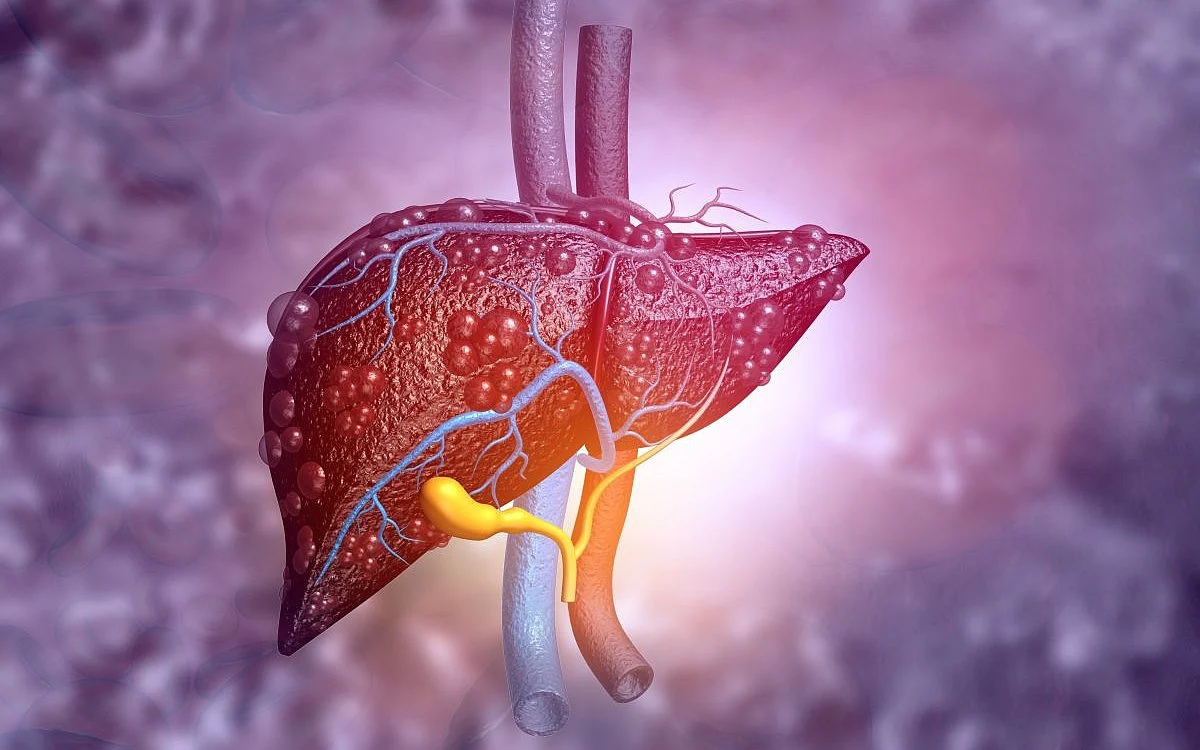Prevalence of Alcohol-Related Liver Fibrosis More Than Doubled Over Last 20 Years
MONDAY, July 28, 2025 -- The prevalence of liver fibrosis has more than doubled over the last 20 years among heavy alcohol consumers, according to a research letter published online July 23 in Clinical Gastroenterology and Hepatology.
Kalpana Gopalkrishnan, from the Keck School of Medicine at the University of Southern California in Los Angeles, and colleagues used National Health and Nutrition Examination Survey data from 1999 to 2020 to examine whether the risk for advanced alcohol-associated liver disease has changed over time among those consuming an increased amount of alcohol. Increased alcohol consumption was defined as ≥20 g/day for women and ≥30 g/day for men in the previous 12 months. The primary outcome was a high Fibrosis-4 (FIB-4) score (>2.67 for adults aged 65 years and younger and >3.25 for those older than 65 years), which was used as a surrogate for liver fibrosis.
Overall, 2,474 of the 44,628 participants were increased alcohol consumers. The researchers found that among increased alcohol consumers, the prevalence of high FIB-4 increased over time, from 1.8 to 4.3 percent in 1999-2004 and 2013-2020, respectively. The corresponding prevalence increased from 0.8 to 1.4 percent among those without increased alcohol consumption. Mean age increased among increased alcohol consumers, and the proportion of women and individuals living in poverty was higher. Similar mean alcohol use was seen across eras. Among increased alcohol consumers, the prevalence of metabolic syndrome increased from 26.4 to 37.6 percent from 1999-2004 to 2013-2020; the corresponding prevalence increased from 32.0 to 40.2 percent among those without increased alcohol consumption.
"These findings -- the first comprehensive look at the demographics of heavy drinking and their relation to liver disease since the 1990s -- provide important new information about which population groups may need more intervention to curb alcohol use and may also explain the rise in liver disease over the years," lead author Brian P. Lee, M.D., also from the University of Southern California, said in a statement. "Our results show that the makeup of the American public with heavy alcohol consumption has changed compared to 20 years ago."
Abstract/Full Text (subscription or payment may be required)
Disclaimer: Statistical data in medical articles provide general trends and do not pertain to individuals. Individual factors can vary greatly. Always seek personalized medical advice for individual healthcare decisions.
© 2025 HealthDay. All rights reserved.
Read this next
Alcohol-Induced Deaths Almost DoubledFrom 1999 to 2024
WEDNESDAY, Sept. 17, 2025 -- Rates of alcohol-induced deaths among U.S. adults nearly doubled from 1999 to 2024, according to a study published online Sept. 17 in PLOS Global...
Healthy Eating, Physical Activity Reduce Risk for Alcohol-Related Liver Mortality
TUESDAY, Sept. 2, 2025 -- Healthy eating and increased levels of physical activity (PA) significantly lower the risk for alcohol-attributable liver-related mortality, according to...
Increased Liver Enzyme Levels Seen With Use of Cannabidiol in Adults
THURSDAY, July 10, 2025 -- Use of cannabidiol (CBD) within the range consumers are taking with unregulated CBD products is associated with increased liver enzyme levels, according...
More news resources
- FDA Medwatch Drug Alerts
- Daily MedNews
- News for Health Professionals
- New Drug Approvals
- New Drug Applications
- Drug Shortages
- Clinical Trial Results
- Generic Drug Approvals
Subscribe to our newsletter
Whatever your topic of interest, subscribe to our newsletters to get the best of Drugs.com in your inbox.


